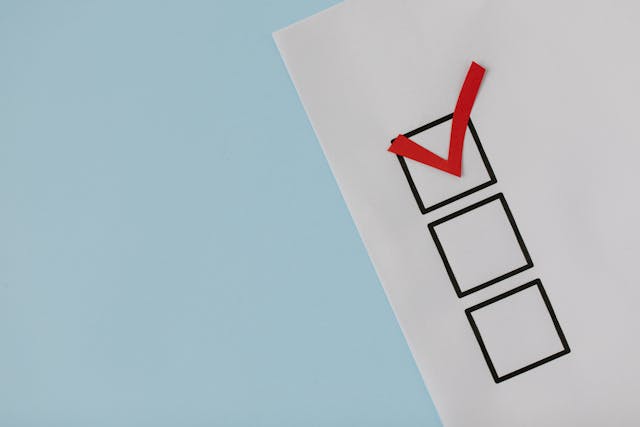The Power of Political Polls: Do They Really Predict Election Outcomes?
Political polls are a staple of modern campaigns, providing insight into public opinion and shaping the strategies of political candidates. Whether it's the lead-up to an election or an ongoing race, polls are often seen as a tool for predicting outcomes. But just how reliable are these polls? Do they truly reflect the will of the people, or are they more of a snapshot in time? Let's take a closer look at the power of political polls and whether they can truly predict election results.

The Role of Political Polls in Elections
Understanding What Polls Measure
Political polls are surveys conducted to gauge public opinion about various issues, candidates, or policies. In the context of elections, polls are typically used to measure the popularity of candidates and predict how they might fare in an upcoming vote. Pollsters gather a sample of voters, ask them questions about their preferences, and then analyze the data to provide an estimate of how the general population might vote.
These polls can be invaluable tools for campaigns, offering insights into which issues matter most to voters, which regions are key battlegrounds, and how a candidate is performing relative to their opponent. In many ways, polls help candidates tailor their messages and allocate resources more effectively, all while giving the public a glimpse of the race's dynamics.
How Accurate Are Polls?
Challenges in Predicting Outcomes
While polls can offer valuable insights, they are not always perfect predictors of election outcomes. There are several factors that can affect the accuracy of political polls:
-
Sampling Error: Polls rely on a sample of voters, and the sample may not always reflect the full diversity of the population. If certain groups are underrepresented or overrepresented, it can skew the results.
-
Timing: The timing of a poll can greatly affect its accuracy. Public opinion can change quickly, especially in the final days of a campaign. A poll taken weeks before an election may not capture the shifts in sentiment that occur closer to voting day.
-
Poll Methodology: Different polling organizations use varying methods to gather data. Some use telephone surveys, others conduct online polls, and some rely on face-to-face interviews. These methodologies can produce different results based on how respondents engage with the poll.
-
Nonresponse Bias: A common issue with polls is the potential for nonresponse bias, where certain groups of people may be less likely to participate in the survey, potentially distorting the findings. For example, younger voters might be less inclined to answer a poll, resulting in a sample that isn't fully representative.
The Problem with Over-Reliance on Polls
Why Polls Don't Always Reflect Election Results
Although polls offer valuable insight into voter preferences, they often fall short when it comes to predicting the final outcome. For instance, in some cases, polls have shown candidates with a strong lead, only for those candidates to lose on election day. This is especially true in close races, where small shifts in voter behavior can have a big impact on the final result.
-
Voter Turnout: Polls typically measure the intentions of likely voters, but predicting actual turnout is tricky. Factors like voter enthusiasm, weather conditions, or last-minute events can influence whether individuals actually show up to vote. A candidate may appear to be leading in polls, but if their supporters are less likely to turn out, the results may be different than anticipated.
-
Undecided Voters: Polls may not always account for undecided voters who make up their minds late in the race. In tight elections, these last-minute decisions can shift the balance of power and defy what earlier polls suggested.
-
The "Shy Voter" Effect: There are instances where voters may not feel comfortable expressing their true preferences in a poll, particularly when it comes to controversial issues or candidates. This phenomenon, sometimes called the "shy voter" effect, can lead to discrepancies between what people say in polls and how they actually vote.
How Polls Have Shaped Elections
Influencing Campaigns and Public Perception
Despite their limitations, political polls still play a major role in shaping elections. They influence campaign strategies, media coverage, and public perception of candidates. Candidates use polls to adjust their messaging, focus on key issues, and target specific groups of voters.
Polls also impact how the media covers a race. For example, when a candidate is shown to be leading in polls, it can generate momentum, attracting more media attention and financial support. Conversely, polls showing a candidate falling behind may result in negative press coverage or a drop in donor support.

The Future of Political Polling
Improving Accuracy with New Methods
The future of political polling may lie in adapting to the changing ways people interact with surveys and share their opinions. Technological advancements, such as social media sentiment analysis and more advanced data modeling, could help improve the accuracy of political polls.
Additionally, polling organizations are becoming increasingly aware of the need for diverse and representative samples. Some are experimenting with new methods, like using text message surveys or targeting niche online communities, to reach different demographic groups and capture a more accurate picture of public opinion.
Furthermore, the trend toward more transparent and ethical polling practices could lead to better public trust in poll results, helping to combat skepticism and misinformation.
Conclusion: Polls Are a Tool, Not a Guarantee
Political polls are powerful tools for understanding public opinion and shaping campaign strategies. However, they are far from perfect predictors of election outcomes. While polls can provide valuable insights into trends and voter preferences, they should always be viewed with a degree of caution, especially in closely contested races.
Ultimately, the true test of a candidate's popularity and the public's political leanings happens at the ballot box. Polls may inform and influence, but they don’t guarantee success. In the end, while they’re useful, political polls are just one piece of the larger puzzle that shapes the democratic process.












